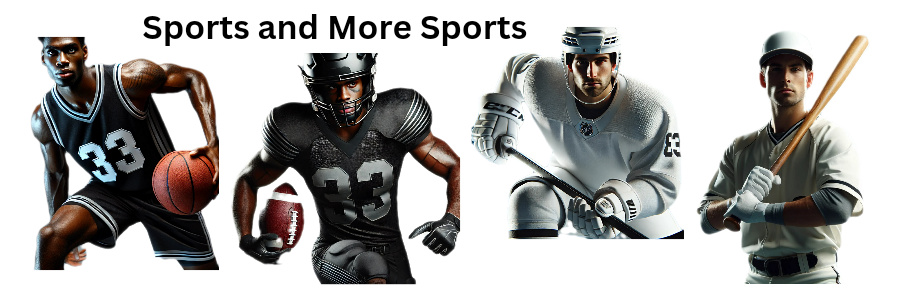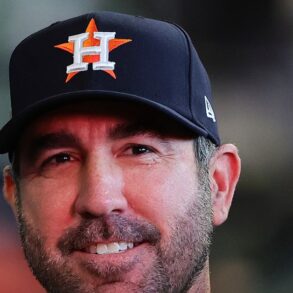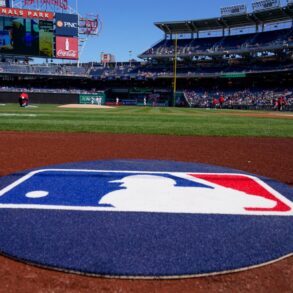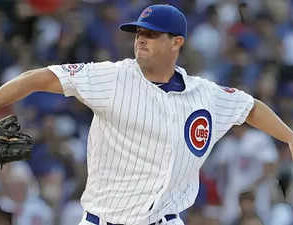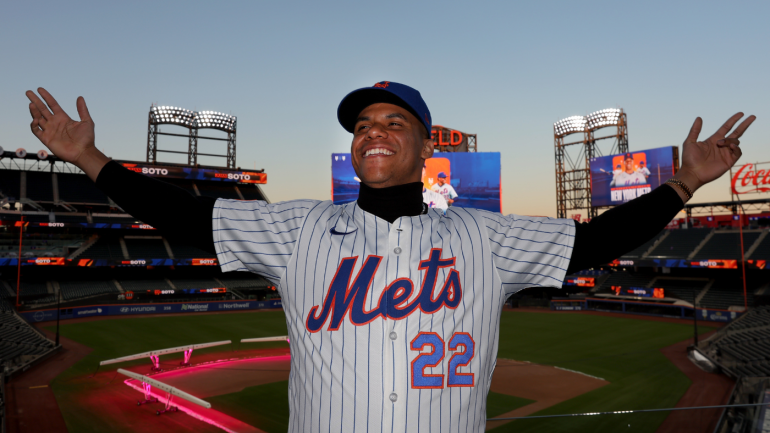
Believe it or not, pitchers and catchers are barely a month away from reporting for duty across sites in Florida and Arizona. Exhibition games will begin shortly thereafter, and before long we’ll be welcoming in a new regular season. Major League Baseball’s offseason, then, is far enough along that we can justify using the New Year as an opportune time to grade how each team has done this winter.
Below, I’ve handed out letter grades to every team for their work thus far this winter. It’s important to think of these as progress reports rather than report cards; there is, obviously, ample winter left for teams to greatly their offseason. In each case, I try to meet the team where they are based on realistic payroll and competitive aspirations. I won’t dock a small-market contender for failing to sign Juan Soto, but I will express frustration if they’ve failed to address an obvious hole.
Something else that I keep in mind doing these grades: baseball is, at its core, part of the entertainment industry. People are quick to proclaim that the goal is to make money when a team trades away a costly player or avoids handing out a lucrative contract; that same logic is seldom applied when it comes to exciting and energizing a fan base, the way the Padres have in recent years. It should go without saying that how teams fare next season will be a function of more of their winters, but that doesn’t mean there’s zero value in having a good offseason. It’s just smart business.
Now, onward.
The Diamondbacks tried twice last winter to upgrade their rotation, signing Eduardo Rodriguez and then Jordan Montgomery. Neither deal has worked out quite as desired to date, leading Arizona to try once again. They’ll almost certainly get better mileage from Corbin Burnes. He was the top pitcher available this winter, and his presence sets them up better for whatever happens with Zac Gallen and Merrill Kelly heading forward (both are free agents after the 2025 season). Josh Naylor was a sensible get to replace Christian Walker (and to some extent Joc Pederson). I will point out that Chase Field is the worst park in MLB for left-handed home runs, meaning Naylor will have to really earn his numbers at home. I like Seth Martinez as a sneaky bullpen addition, too. Grade: B
The Athletics have gone nuts this winter by their own meager standards, signing righty Luis Severino and infielder Gio Urshela, trading for lefty Jeffrey Springs and extending Brent Rooker. And yet … they’re only $9 million above last Opening Day’s $61 million figure, and laughably distant from the $100 million heights that were floated before the offseason started. (The intent being, in case it wasn’t obvious, to avoid a potential MLBPA grievance about their revenue-sharing money.) The moves are fine, and they should pair with some interesting players already on the roster to make for a better product than the A’s have fielded in years. Grade: C
Alex Anthopoulos heads one of the best front offices in the game, and betting against them is usually a fool’s errand. I’ll admit it though: I don’t get the Braves offseason. When they traded Jorge Soler to clear up funds, I thought they were going to make a splash. Instead, their depth chart includes Bryan De La Cruz starting in the outfield; Ian Anderson and Grant Holmes in the rotation; and a virtually unchanged bullpen. Maybe the other shoe is yet to drop, or maybe the Braves want to see how Spencer Strider and Ronald Acuña Jr. return before being more aggressive at the trade deadline. Fair enough if that comes to pass. I don’t see how to grade this particular winter to this particular point as anything but a disappointment. Grade: F
I had high hopes that new owner David Rubenstein would inspire the Orioles to throw around some coin (or at least some prospects) and maximize what remains of the core’s cost control. So much for that. It’s been the same old, same old for Baltimore; plenty of logical moves, but few that rise to the level of being an impact addition. Outfielder Tyler O’Neill and catcher Gary Sánchez should benefit from the altered left-field dimensions; the inverse might be true for right-hander Tomoyuki Sugano, transferring from Japan at the tender age of 35. Charlie Morton, well, let’s just say it feels like they’re missing a good opportunity to put themselves over the top. Grade: C
I want to see the Red Sox add another bat between now and Opening Day, but I’m giving them a high mark on the basis of their additions to the pitching staff. Specifically, I loved the Garrett Crochet trade (obtaining an impact southpaw without touching the tip-top of a strong system) and suspect the Walker Buehler signing will pay dividends as well. I’m of the mind that this Boston team has a chance to make the leap and quickly; nothing about their winter has caused me to stray from that thinking. Grade: A
I liked the Kyle Tucker trade a lot for the Cubs, as they netted one of the dozen or so best players in the sport for a couple expendable big-league parts (in Isaac Paredes and Hayden Wesneski) and their most recent first-round pick (Cam Smith). It’s the kind of instant-impact addition that the Cubs need after a down year, and I can only hope that they seriously pursue a long-term extension with him before he reaches free agency. The Tucker move carries the grade, but Chicago has also added several downmarket types through trades and free agency, particularly on the pitching staff. Among them: lefties Matthew Boyd and Caleb Thielbar; righty Eli Morgan; and backup catcher Carson Kelly. Grade: B
If you haven’t been paying attention to the White Sox (and no one would blame you if so), they’ve been busier than you might have expected. They’ve inked several players to big-league contracts, including infielder Josh Rojas, outfielders Mike Tauchman and Austin Slater, and right-handed starter Bryse Wilson. They’ve also obtained a few mildly intriguing players in trades or off waivers in catcher Matt Thaiss and righty reliever Penn Murfee. None will greatly alter Chicago’s fortunes, but maybe they can play themselves into being of interest to contenders at the deadline. The real headliner here was the Garrett Crochet trade, with the White Sox getting back a solid package of prospects led by catcher Kyle Teel and outfielder Braden Montgomery. I am docking them just a touch here for seemingly not pursuing a Luis Robert Jr. trade with more gusto, but perhaps that has more to do with his down season than a lack of trying. Grade: C
A year ago the Reds felt like they were a few supporting players away from making noise in the NL Central, making this winter a disappointment in my book. I have no real issue extending the qualifying offer to right-hander Nick Martinez — who, in turn, was the only player to accept the tender, perhaps eating up much of Cincinnati’s budget in the process. Beyond that? The Reds have obtained catcher Jose Trevino and Brady Singer in trades, with the latter likely playing a bigger role in how their 2025 season plays out. Ultimately, the Reds are going to sink or swim based on internal gains; I just wish it wasn’t to this degree. Grade: D
Retaining staff anchor Shane Bieber, who went down to elbow surgery early last season, was a pleasant development to kick off the winter. I didn’t mind the Guardians bailing on Andrés Giménez; not with that contract, and not with Travis Bazzana on the fast track to the majors. I also thought they received some interesting arms back from the Pirates in exchange for Spencer Horwitz, including Luis L. Ortiz, who has a devastating slider. I won’t pretend that I can make heads or tails out of the Josh Naylor-Carlos Santana switcheroo, but there’s enough good going on here to land Cleveland a solid grade — even if, ideally, they should do a little more to stake out an advantage in the AL Central. Grade: B
The Rockies haven’t done much this winter. Consider that their most notable moves include retaining catcher Jacob Stallings (after he declined his end of a mutual option); and attempting to shore up their infield by trading for Owen Miller and inking Kyle Farmer and Thairo Estrada. It’s remarkable that this club has ranked 16th or higher in payroll in six of the last eight seasons. Grade: D
My hope entering the offseason was that the Tigers would feel empowered by their surprising playoff berth and do something bold. Maybe they do and there’s a big move left up their sleeve, but thus far Detroit fans have had to settle for signing second baseman Gleyber Torres and starter Alex Cobb. Both are fine players, albeit with clear downside: Torres is a bat-first second baseman who has finished as a league-average hitter or worse in three of the last five years; Cobb is coming off a 16-inning campaign and is a constant injury risk. I can certainly envision both being solid contributors for Detroit. I just think they still need to add their winter’s crown jewel to maximize the opportunity in front of them. Grade: C
I thought the Astros did well enough in the Kyle Tucker trade, netting immediate help in third baseman Isaac Paredes and utility arm Hayden Wesneski, as well as a potential future piece in prospect Cam Smith. I have to admit, though, that this seems like an organization that’s caught in between two goals. Trading Tucker, one of the dozen or so best players in the sport, makes some sense for a franchise that sees its competitive window finally starting to close; it’s a little harder to understand when that same franchise invests heavily in a closer (as they did last offseason with Josh Hader) and in a mid-30s right-right first baseman (Christian Walker). There’s some dissonance there, not enough to tank the grade or anything, but enough to make you wonder how the Astros will approach the deadline if they aren’t in the driver’s seat in the AL West. Grade: B
It’s fair to write the Royals haven’t matched last offseason’s activity level; I suppose that was always going to be the case following a successful run to the playoffs. The retention of starter Michael Wacha marks their only guaranteed big-league deal handed out this offseason. Otherwise, their biggest swing was trading starter Brady Singer for infielder Jonathan India and outfielder Joey Wiemer. I think India can provide Kansas City with some much-needed on-base ability, but I’d really like to see them add one more bat before Opening Day. Grade: C
I can see what the Angels were trying to do during the first half of this winter. I don’t know if it’s going to be successful, and even if it is, it might not work out as well as what the Royals pulled off last winter. Still, in this era where tanking has become normalized, I appreciate it whenever a losing team makes a real effort to improve. The Angels built up their middle-of-the-diamond depth (catcher Travis d’Arnaud and infielders Kevin Newman and Scott Kingery); added a real thumper in Jorge Soler; and swung on Yusei Kikuchi and Kyle Hendricks, hoping to land on the right side of the risk-reward spectrum. You don’t have to work hard to come up with reasons to doubt the Angels’ competitive aspirations, but I’m giving them a generous grade with the hopes that they’re rewarded for daring to try to get better. Grade: B
Nothing will match last offseason for the defending champions, but they’ve done plenty of good this winter to maintain their spot as the best team in baseball. They’ve added two-time Cy Young Award recipient Blake Snell, outfielder Michael Conforto, and infielder Hyeseong Kim, brought back closer Blake Treinen and outfielder Teoscar Hernández, and extended utility starter Tommy Edman. It’s hard to pick many nits here, and just think: it’s possible that the Dodgers net Roki Sasaki in about a week’s time, making their offseason look even better than it does now. Grade: A
I felt the Marlins’ return on Jesús Luzardo was a touch light, even if it’s possible that it was influenced by medical concerns. I do like several of their deeper-level additions for what they are and what they’re likely to yield. Corner infielders Eric Wagaman and Matt Mervis have each posted some impressive underlying minor-league metrics; there are reasons to think both are Quad-A players, but giving them looks is a justifiable decision for a team in Miami’s spot. Rule 5 pick Liam Hicks could also be an interesting pickup if his contact and on-base skills port from Double-A. Grade: D
The Brewers’ only real offseason move of note to date saw them trade closer Devin Williams for lefty Nestor Cortes and infielder Caleb Durbin. I liked that just fine for Milwaukee: Cortes, if healthy, can provide them another above-average starter; Durbin, meanwhile, has a risky profile but starting second baseman upside if his pull-happy approach transfers against big-league pitching. Keep an eye on lefty Grant Wolfram, a minor-league free agent signed to a MLB pact; he has an above-average sinker-slider combination that could see him crack Milwaukee’s bullpen. Ideally they’d take more bold steps to assert control over the NL Central, but what can you do. Grade: B
The Twins’ budgetary woes are and have been an open secret across the league. It’s not shocking that they haven’t done much of anything this winter. It is disappointing, however, since it means this team will remain a few pieces shy of being a legit pennant contender. I have only one grade I can hand out here. Grade: F
I have a simple rule of thumb: if you sign a 26-year-old future Hall of Famer, you get an A for the winter no matter what else you do (or don’t do). David Stearns has kept busy this offseason even after landing Juan Soto. He’s assembled an interesting crop of rotation candidates: Frankie Montas, Clay Holmes, and Griffin Canning among them. He also brought back lefty Sean Manaea and obtained outfielder Jose Siri, who ought to provide New York with a defensive boost. There’s certainly some downside risk with the rotation, but the Mets look like a better team, with a higher ceiling, than they did when they reached the NL Championship Series last fall. Grade: A
On the other hand, it’s hard to lose a player of Soto’s caliber and salvage the winter into a high grade. Brian Cashman managed to do just that by signing steady lefty Max Fried and rebound candidate Paul Goldschmidt to man first base, as well as trading for outfielder Cody Bellinger and high-leverage relievers Devin Williams and Fernando Cruz. Cashman still has some work left to do on the roster — specifically, adding another infielder — but if you’re going to pivot from losing a superstar, there are worse ways to go about it. Grade: B
The Phillies haven’t made the splashy, top-of-the-market move this winter; they have, nevertheless, added some volatile players who could up Philadelphia’s ceiling. Lefty Jesús Luzardo had a down, injury-ravaged season but could give manager Rob Thomson another above-average starter if he can stay healthy; outfielder Max Kepler ought to provide good defense in a corner and at least a 90 OPS+; closer Jordan Romano isn’t far removed from making two All-Star Games; and so on. There’s enough downside present that I can’t go all the way to an “A,” but I think this has been a productive winter and one that keeps the Phillies in contention for the NL pennant. Grade: B
Pittsburgh Pirates
It’s great that Andrew McCutchen is going to finish his career in Pittsburgh on his own terms. I think the Spencer Horwitz addition could surprise people who are unfamiliar with his game; I had him as a breakout player last spring, and goodness knows the Pirates could use the offensive boost if they’re going to return to the postseason for the first time since 2015. In fact, my biggest complaint here is that the Pirates aren’t going far enough to leverage their pitching depth to upgrade the lineup. Obviously that’s easier said than done, but this team needs another bat to be a serious threat. Grade: C
San Diego Padres
The Padres have all but sat out the offseason to date. As a result, there’s only one grade I can give them. A.J. Preller has demonstrated time and again that he’s capable of making some impact additions in short order. I would be surprised if San Diego takes the same laissez-faire approach to the remainder of the winter. Grade: F
Buster Posey‘s first offseason in charge started with him signing shortstop Willy Adames to a long and lucrative contract (albeit one that might have some lean late years if his strikeout rate balloons as he ages). Beyond that? It’s been largely uneventful. The Giants have reliably fielded teams that win around 80 games, give or take; signing Adames and stopping there means that this group feels like more of the same. Grade: C
Remember when teams feigned having ambition? The Mariners have won at least 54% of their games in three of the past four seasons; they have an outstanding farm system; and, to my eyes, they might just enter the spring as the favorites in the American League West. There’s every reason for them to take a big cut. Yet here they are, with a month to go until pitchers and catchers report, and they’ve added a single player this offseason projected to make their Opening Day roster: first baseman Austin Shenton. Again, the Mariners might be pretty good this year. It won’t be because of the effort they’ve put forth this offseason. Grade: F
The Cardinals signaled early on that they were a team in transition, that they wouldn’t be approaching this winter with the intent to field the best possible roster in 2025. Surely, I assumed, this winter would instead see them trade away a few veterans in pursuit of a better tomorrow. It’s a little jarring, then, to note that the Cardinals thus far haven’t traded … well, anyone. At absolute minimum, you’d think they could fetch a decent return for closer and impending free agent Ryan Helsley, or mid-rotation starter Erick Fedde. Maybe those deals are to come at some point before Opening Day; if so, they’ll have a different grade when the final accounting is calculated. As it stands, St. Louis’ most notable piece of business was laying out the front office’s succession plan; Chaim Bloom is well-liked both inside and outside of the organization, and he undoubtedly received a raw deal in Boston. If I had to guess, he’ll fare much better in St. Louis. For now, though, there’s only one grade I can realistically give the Cardinals for their work to date. Grade: F
Compared to the trade deadline, the Rays have been quiet this offseason. They’ve traded away several veterans, as they are wont to do, with lefty Jeffrey Springs and outfielder Jose Siri serving as the most notable exports. Rebound candidate and catcher Danny Jansen remains the only player they’ve signed to a big-league contract — that despite being projected to sport their lowest Opening Day payroll since 2021. It’s to be seen whether or not pitching coach Kyle Snyder can tame Joe Boyle‘s wildness; if that pairing can work some magic together, the Springs trade (and Tampa Bay’s winter as a whole) will look a lot better in a hurry. Otherwise? The Rays’ stadium hysterics have overshadowed everything done (or not done) by the baseball operations department. Grade: D
The Rangers haven’t had a flashy offseason, but they’ve done some decent work that could pay dividends in retaining Nathan Eovaldi to stabilize the rotation; adding thump in the persons of Joc Pederson (fresh off one of the quietest 151 OPS+ seasons in recent memory), Jake Burger, and Kyle Higashioka; and overhauling the bullpen without handing out a regrettable contract. I don’t know that those moves on their own will catapult the Rangers back into top contender status, but that would be true of most realistic offseasons. You can’t buy what the Rangers need most: better health and instant improvements from key young players. Grade: B
Do the Blue Jays themselves know which direction they intend to take? Absorbing Andrés Giménez’s contract and attempting — or, at least, “attempting” — to land a variety of premium free agents indicates a desire to win now and in the near future. At the same time, the Blue Jays haven’t done much beyond the Giménez trade to improve their roster, or their chances of maximizing what could be their final year with Vladimir Guerrero Jr. and Bo Bichette. There are situations where standing pat is by and large the correct strategy; I’m not sure that’s the case here. Grade: D
The Nationals have an impressive young hitter core in place, led by outfielders Dylan Crews and James Wood, as well as some intriguing power arms en route. Add in Patrick Corbin‘s expiring contract, and this winter seemed like the opportune time to add the new version of Jayson Werth. So much for that. The Nationals have been choosy to the point of being passive all winter. Nathaniel Lowe was a good get; Mike Soroka is an interesting gamble; and Josh Bell could be a bargain at his price. Even seeing the merits in those moves, the Nats’ Opening Day payroll is projected to fall more than $20 million beneath last year’s mark. Talent matters more than dollars, but I can’t shake the feeling they’ve wasted a golden opportunity to get better faster. Grade: D
This post was originally published on this site be sure to check out more of their content.

